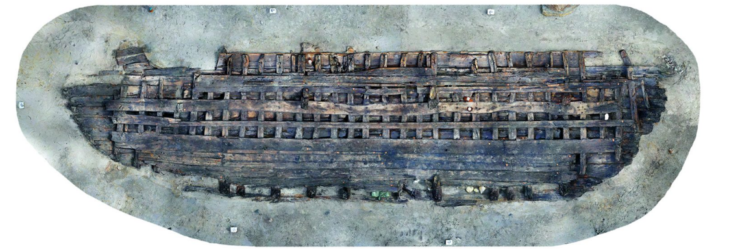The strange shipwreck of two medieval ships discovered last spring off the coast of Sweden has gained new information. Their ages and distant origins have now been identified by researchers.
According to a Nov. 16 press release from the archaeological consulting firm Arkeologerna, the merchant boats were found close to the building of a railway tunnel in Varberg, roughly 120 miles north of Copenhagen. Archaeologists determined that the ships were cogs, a popular style of medieval ship.
According to the website of the Estonian Mere Museum, cogs were “huge, with a big cargo compartment, and were often fitted with one mast and one enormous square sail.” The discovery of the vessel remnants within 30 feet of one another is quite unique, according to experts. One of the shipwreck is the best-preserved cog wreck ever discovered in Sweden since its port side is almost entirely intact. Less than 40 have been found in all of Europe, and just seven have been found in the nation thus far.
According to the news of The Charlotte Observer, wood samples recovered from the ship have now been examined, months after archaeologists first made their original discovery, and the findings provide answers to open-ended issues. According to archaeologists, the bigger vessel, known as Varbergskoggen 1, was built from wood that was in 1346. The Netherlands, Belgium, and France were the locations where the wood came from, hundreds of miles distant.
Though the two ships have a same ultimate resting site, the smaller ship, known as Varbergskoggen 2, was constructed between 1355 and 1357 utilizing wood from northern Poland.
Researchers are still unsure of what caused or how the two ships to sink. According to Anders Gutehall, one of the project’s archaeologists, the bigger of the two ships “rolled on to its port side while it was still rigged thus the ship must have been in service at the time,” adding that the wreck site was a shallow bay when the ships sank.
“We are not sure if they sunk during a storm or if someone deliberately sunk them,” Gutehall said. According to the Maritime Injury Center, some of the leading causes of shipwrecks are bad weather, accidents, floods, and movement of badly stowed cargo. Archaeologists added that the sorts of food and other commodities that were stowed on board may someday be revealed by soil samples, which may offer further information about the ships’ last excursions.
Given that the crash occurred near to the medieval village of Getakärr, the crew was probably moving cargo there or away from it, according to Gutehall.
Leather shoes, wooden spoons, and carved kegs, among other household goods discovered inside the wreck, may potentially aid scholars in solving the riddle of the lost ships.
“In the coming year we will continue with examining the ships’ timber and document each of them with a hand held laser scanner…which will also be used for a 3D reconstruction.” Gutehall said.
Off the Swedish coast, at least a few more antiquated shipwrecks have recently been found. According to the Smithsonian Magazine, a 500-year-old ship packed with troops and Danish aristocrats was discovered in 2021 off the southern Swedish shore.
According to earlier McClatchy News reporting, in October archaeologists claimed that another Swedish shipwreck had been unearthed by scuba divers. Researchers came to the conclusion that the wreck was the Äpplet, a warship built for a Swedish monarch in the 17th century based on samples of the wood.
Cover photo: AOL
